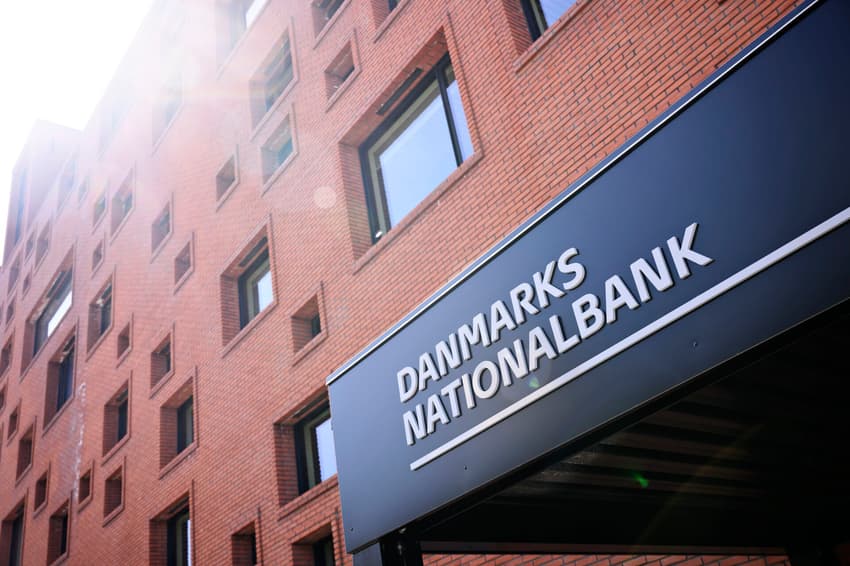Danish national bank says wage increases will keep inflation high

Thousands of people who work in Denmark are set to receive wage increases under new collective bargaining agreements, but the flip side for private finances is a likely knock-on effect maintaining inflation.
Wage increases given to people under the Danish labour system in 2023 and 2024 could help to keep inflation levels up, according to a new forecast by the Danish central bank, Nationalbanken, published on Tuesday.
The central bank publishes two forecasts each year for expected developments in the Danish economy.
“Inflation in Denmark is expected to come down significantly during 2023 as the inflation pressure driven by global conditions eases,” the bank stated.
“But that will be replaced by an inflation pressure driven by domestic circumstances resulting from higher wage increases,” it wrote in the forecast.
Collective bargaining agreements between employer confederations and trade unions this spring are likely to see wage increases for workers across sectors, due to higher living costs connected to inflation.
READ ALSO: Danish store workers get pay rise in new bargaining agreement
Inflation is predicted to finish at 4 percent for the whole of 2023. That is lower than the inflation rate for the whole of 2022.
Next, inflation will reach 3.6 percent for the year according to the new forecast. This is higher than the figure given for 2024 in the previous forecast, which was 1.7 percent.
Core inflation or kerneinflation, a measure of inflation which does not account for the price of energy and raw food materials, is expected increase as a result of the wage rises.
The measure is predicted to end at 6.2 percent this year and 4.3 percent next year.
The central bank called for political measures to keep a rein on inflation.
“At the current time, Denmark and the eurozone have largely the same challenges in relation to bringing down inflation with an outlook of wage increases which are not compatible with stable, low inflation in the long term,” the bank writes.
“Potential new financial policy that increase capacity strain on the economy should, as a minimum, be responded to with measures that ease the strain in other areas,” it said.
The risk of inflation taking hold in a spiralling increase of prices and wages still exists, the central bank argues. As such, it advocates political intervention should the risk increase.
In such a spiral, higher wages result in higher costs for companies, which raise their prices, meaning consumers need renewed wage increases to maintain their purchasing power.
READ ALSO: Will falling inflation in Denmark mean lower living costs?
Comments
See Also
Wage increases given to people under the Danish labour system in 2023 and 2024 could help to keep inflation levels up, according to a new forecast by the Danish central bank, Nationalbanken, published on Tuesday.
The central bank publishes two forecasts each year for expected developments in the Danish economy.
“Inflation in Denmark is expected to come down significantly during 2023 as the inflation pressure driven by global conditions eases,” the bank stated.
“But that will be replaced by an inflation pressure driven by domestic circumstances resulting from higher wage increases,” it wrote in the forecast.
Collective bargaining agreements between employer confederations and trade unions this spring are likely to see wage increases for workers across sectors, due to higher living costs connected to inflation.
READ ALSO: Danish store workers get pay rise in new bargaining agreement
Inflation is predicted to finish at 4 percent for the whole of 2023. That is lower than the inflation rate for the whole of 2022.
Next, inflation will reach 3.6 percent for the year according to the new forecast. This is higher than the figure given for 2024 in the previous forecast, which was 1.7 percent.
Core inflation or kerneinflation, a measure of inflation which does not account for the price of energy and raw food materials, is expected increase as a result of the wage rises.
The measure is predicted to end at 6.2 percent this year and 4.3 percent next year.
The central bank called for political measures to keep a rein on inflation.
“At the current time, Denmark and the eurozone have largely the same challenges in relation to bringing down inflation with an outlook of wage increases which are not compatible with stable, low inflation in the long term,” the bank writes.
“Potential new financial policy that increase capacity strain on the economy should, as a minimum, be responded to with measures that ease the strain in other areas,” it said.
The risk of inflation taking hold in a spiralling increase of prices and wages still exists, the central bank argues. As such, it advocates political intervention should the risk increase.
In such a spiral, higher wages result in higher costs for companies, which raise their prices, meaning consumers need renewed wage increases to maintain their purchasing power.
READ ALSO: Will falling inflation in Denmark mean lower living costs?
Join the conversation in our comments section below. Share your own views and experience and if you have a question or suggestion for our journalists then email us at [email protected].
Please keep comments civil, constructive and on topic – and make sure to read our terms of use before getting involved.
Please log in here to leave a comment.